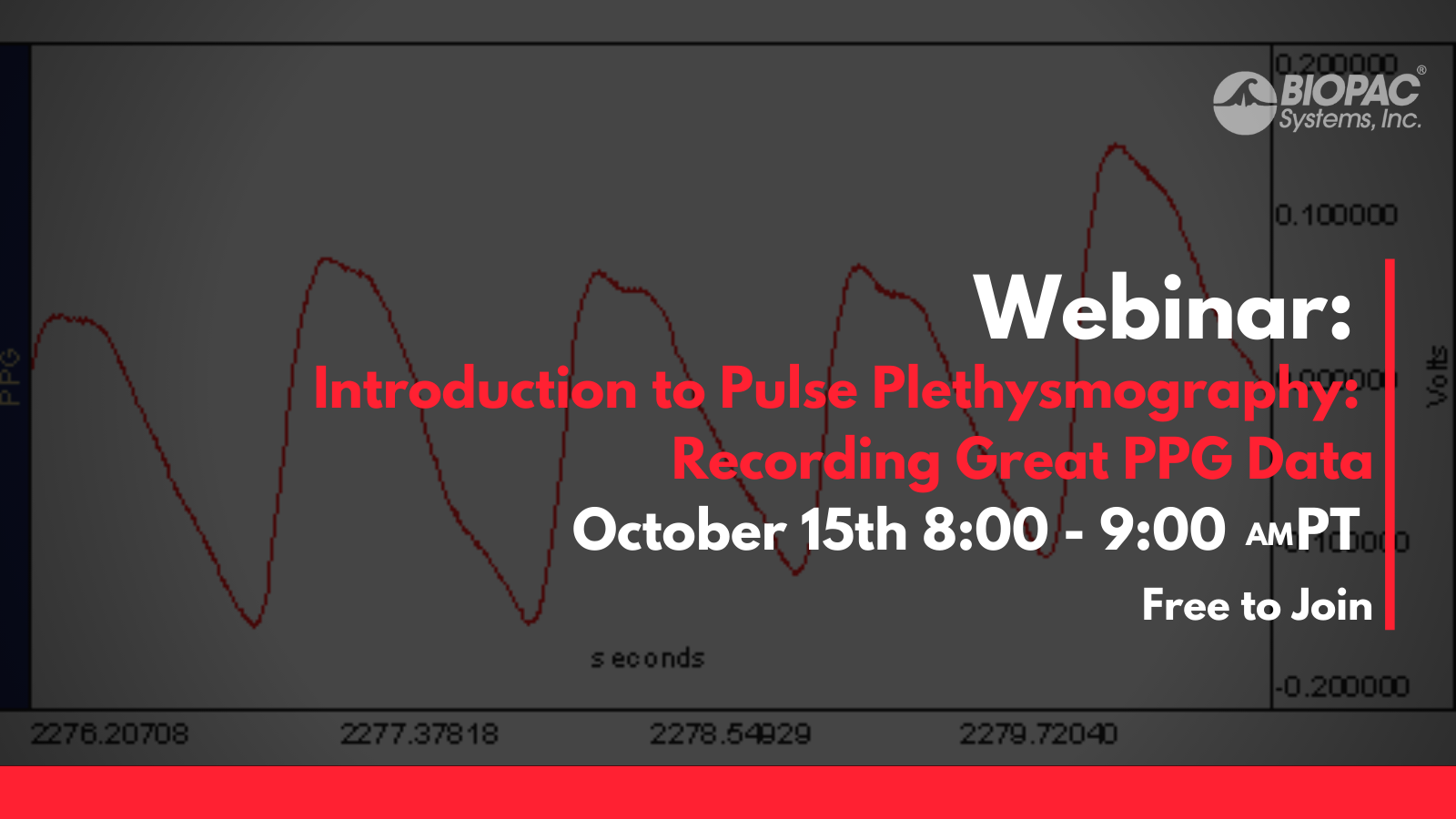Introduction to Pulse Plethysmography: Recording Great PPG Data
Date
Thursday, October 15, 2020
Location
LIVE On-Demand
Host
BIOPAC SYSTEMS, INC. - U.S.A.

Pulse Plethysmography—detecting blood volume changes—is most commonly recorded with a plethysmograph (PPG). Good data recording techniques and the right selection of tools is crucial to acquiring reliable and repeatable results for a wide array of life science applications including Psychophysiology, Exercise Physiology, Sleep Studies, and more. In this event we will discuss the pros and cons of different recording areas, proper techniques and tools, and artifact and data analysis strategies. Join Alex Dimov from BIOPAC to learn how to record great plethysmography data. Learn about wired and wireless PPG recording options for a variety of body locations, and use in the MRI. Alex will demonstrate how to set up a pulse plethysmography experiment and show you how to identify good and bad data. He will also discuss techniques to get you started with basic analysis. What You Will Learn:
Related Webinars: | Complete Form to Watch Webinar! |
About Alex Dimov 
Alex Dimov (BIOPAC Systems, Inc.) has been teaching workshops on the topic of physiological data acquisition and analysis for nearly 15 years. While at UC Santa Barbara he was an instructor for The Advanced Training Institute for Virtual Reality in Social Psychology. He joined BIOPAC as an application specialist and now oversees European Sales for BIOPAC.
For more information about BIOPAC events, check the BIOPAC Events Calendar or email support@biopac.com.
Stay Connected